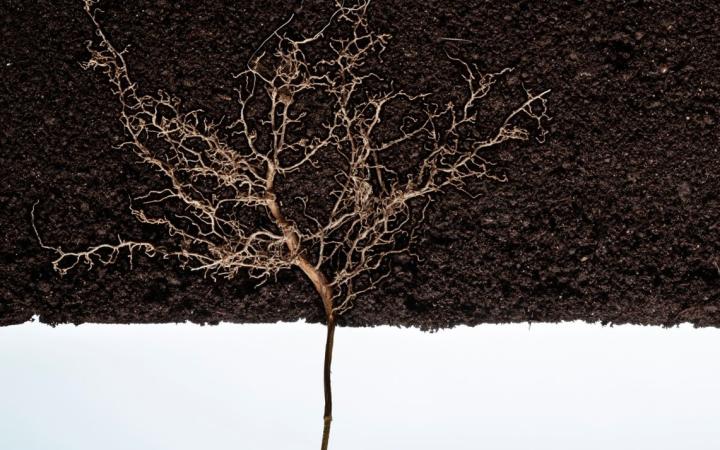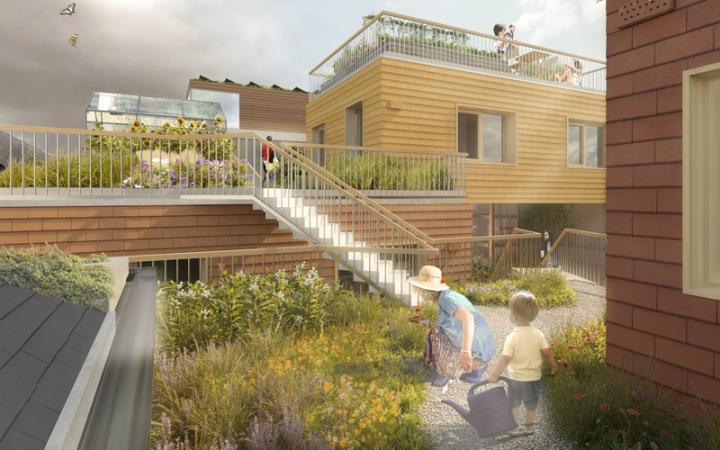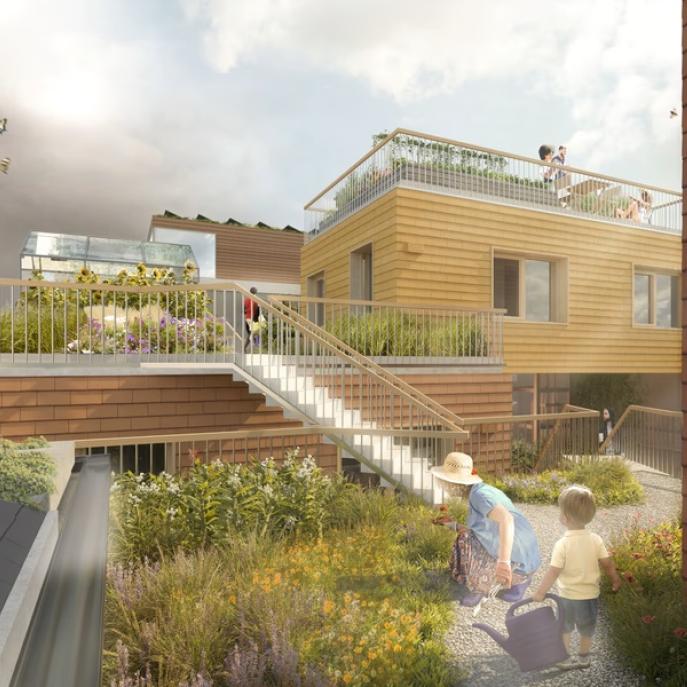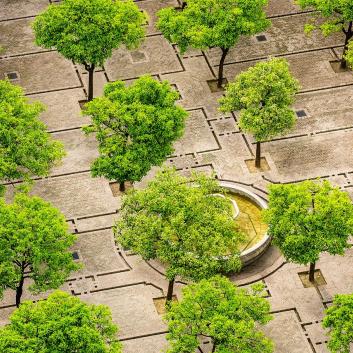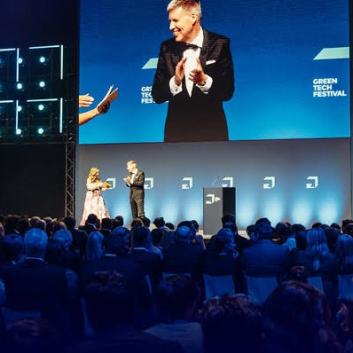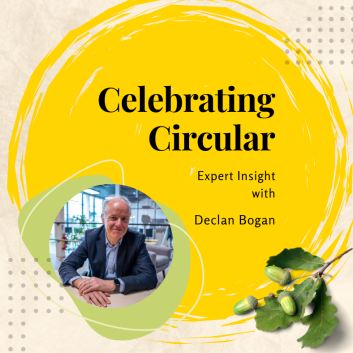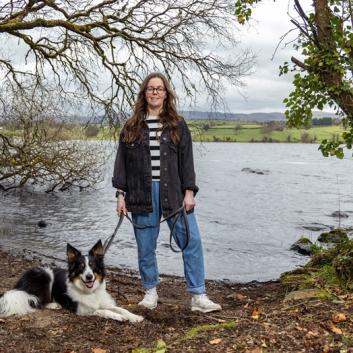Designing a better reality through regenerative urban development
The natural and built environment is exposed to increased pressure due to the impacts of climate change, which is only expected to intensify over time.
Architect Kevin Loftus believes that at the heart of addressing this challenge is bad design, which can be and should be replaced with design solutions that positively impact people and the planet.
After spending a decade abroad, studying and working internationally from the UK to China and the Netherlands, he recalls experiencing a growing awareness of the built environment's impact on the natural environment.
“I became disillusioned with the industry and current business as usual. This was the motivation to begin a new form of practice that seeks to find solutions to the key challenges facing the built environment from an environmental perspective, ranging from low-carbon design to creating sustainable communities through co-design.”
After returning to his hometown, Ballina, in County Mayo, he set up the social enterprise ACT Studio, which stands for Accelerating Change Together, in 2021 with former colleagues James McConville and Tom Lindsay to fulfil this ambition.
Their team comprises architects, urbanists, and policy specialists working to accelerate the Green Transition and deliver projects that combine regenerative approaches with social impact.
As design director, Kevin oversees setting standards and design processes across projects, including continuous research and developing new techniques to achieve regenerative and net-positive outcomes.
He explains that “currently, the design and construction of our towns and cities are disconnected from natural processes that support ecological stability”.

As Kevin sees it, conventional design approaches often overlook issues like the urban heat island effect, stormwater flooding, fragmentation of natural corridors, dispersed land use, and high embodied and operational carbon emissions.
“To design regeneratively means adopting a holistic approach, where we are mindful of the inputs and outputs of the systems we create. This awareness allows us to ensure that outputs can be reused in ways that either reinforce the system or act as positive resources for nature.
For example, a regenerative design might include an orchard park that grows fruit for local consumption, composts its waste on-site, harvests energy from the composting process, and uses the compost to plant more green spaces nearby.”
Generating surplus energy through renewable sources to be shared elsewhere or using strategic planting to absorb stormwater, thus reducing pressure on stormwater systems while creating green spaces for both people and nature, are other examples of the same logic, according to Kevin.
ACT Studio team views nature as a fundamental partner and asset in creating urban spaces while adopting circularity and Nature-Based Solutions (NBS) principles.
He emphasises that aiming to "do no harm" is insufficient and that we need solutions that actively work to restore the planet, making regenerative design more a necessity rather than a choice.
“Achieving social and cultural change, essential for environmental transformation, requires tangible examples that prove a different way is possible.
Our projects aim to serve as these examples, showcasing a future where humanity exists in harmony with the natural world.”

One of their latest projects is reimagining town-centre living to attract people back to urban areas by transforming Scotch House in Ballina through revitalising vacant, above-shop units and adding new residences by stacking them above existing rear structures, connected by a series of shared gardens.
The core concept reflects ACT Studio's regenerative and social approach as it integrates offering amenities like open green spaces, own-door access, and even on-site growing opportunities with a new public laneway to encourage active travel and enhance the public realm.
“The development will generate a surplus of renewable energy, with new units constructed from a straw panel system that sequesters carbon within the building’s structure”,
shares Kevin.
Recently granted planning permission, the project aims to create a model for urban regeneration.
Having worked with various development projects, Kevin believes embracing complexity and being willing to iterate is crucial to translating regenerative concepts into actual developments.
Their development process involves challenging the status quo and exploring options from different angles, including clients, consultants, and other project stakeholders, so this “collaborative approach ensures that ideas for regenerative solutions can emerge from everyone engaged in the project”.
Another project that Kevin feels represents the benefits of a holistic approach is the Bioeconomy Tapestry development, located at Cill Ulta, a Centre for Sustainability, which aims to promote food sovereignty, sustainable energy, farm-to-fork research, Irish agricultural heritage and crafts, and the Irish language.
“In collaboration with Rhatigan Architects, we designed a masterplan to expand the site’s capacity by adding new food production facilities, a greenhouse with labs, a bioeconomy research centre, and new educational spaces."

He adds that 25% of the site is reserved for nature and habitat areas, protecting endangered Irish species like the corncrake, and the site development plans are designed to accommodate crop rotation and designate shifting areas for pollinators.
“The centre will explore ways to make native crops more resilient to climate change and promote regenerative farming practices at both local and national levels.”
Despite the significant potential of regenerative design, there are numerous challenges.
As Kevin has observed from his experience working on various development projects, one of the primary obstacles is the lack of understanding of the pressing nature of our climate and social situation.
Challenging existing mindsets and leaving the certainty of “business as usual” is another area where a lot needs to be done besides shifting government policy and regulation that would support innovative design instead of blocking it.
“I wish our culture of consumption could be replaced by a culture of care. If we based our decisions, policies, and laws on the principle of caring for others and the environment, our mission would effectively fulfil itself.”
Kevin and his team also developed an in-house tool called Accelerating Action software product to offer a practical solution for making impact matter more by providing metrics and visuals.
“This tool uses the UN’s Sustainable Development Goals (SDGs) as a foundational framework to demonstrate alignment with SDG targets, helping communicate a project’s impact. It can also be used in early-stage workshops to assess the potential impact of a project, guiding its overall direction.”
Headline image: ACT Studio


